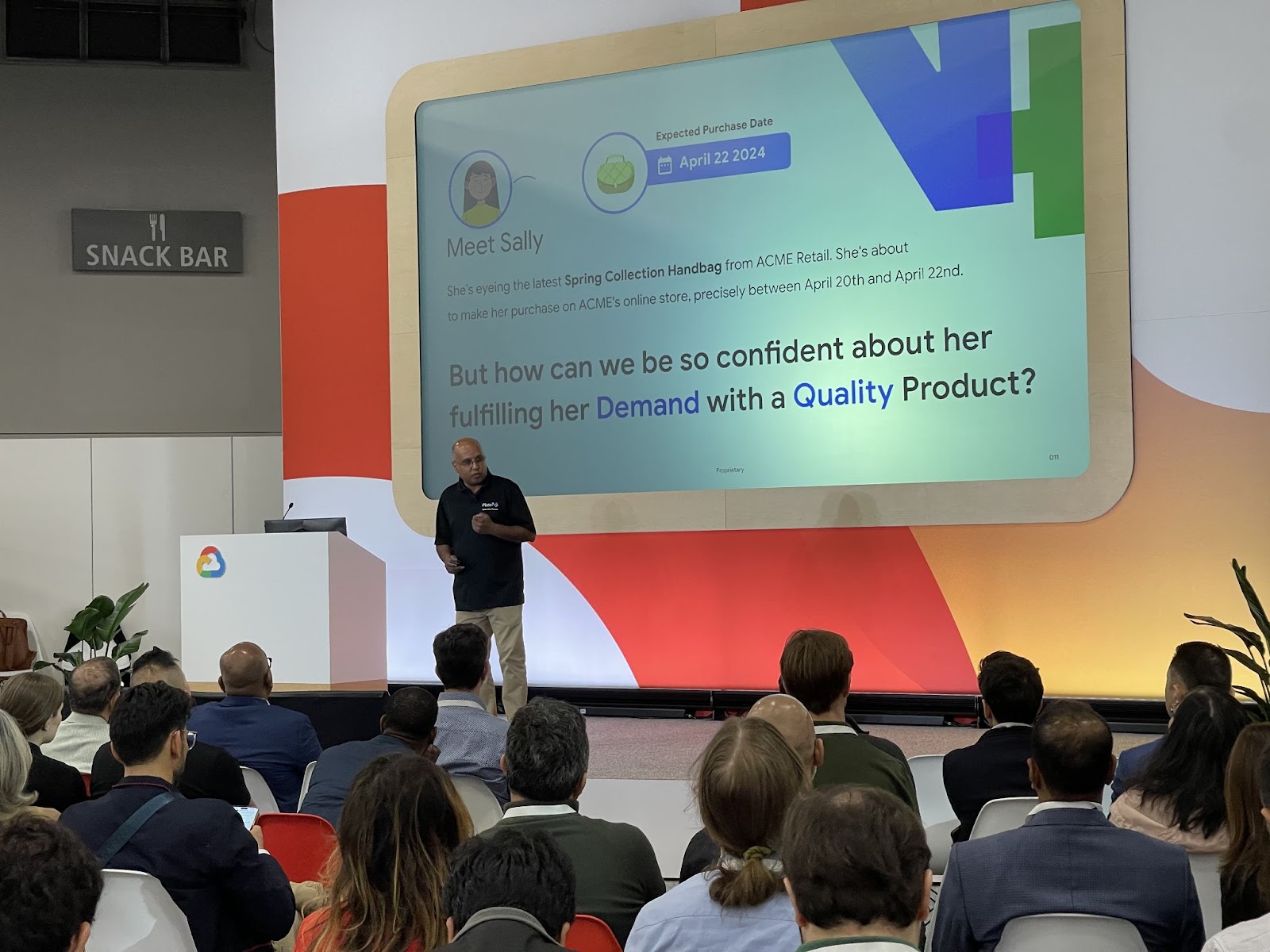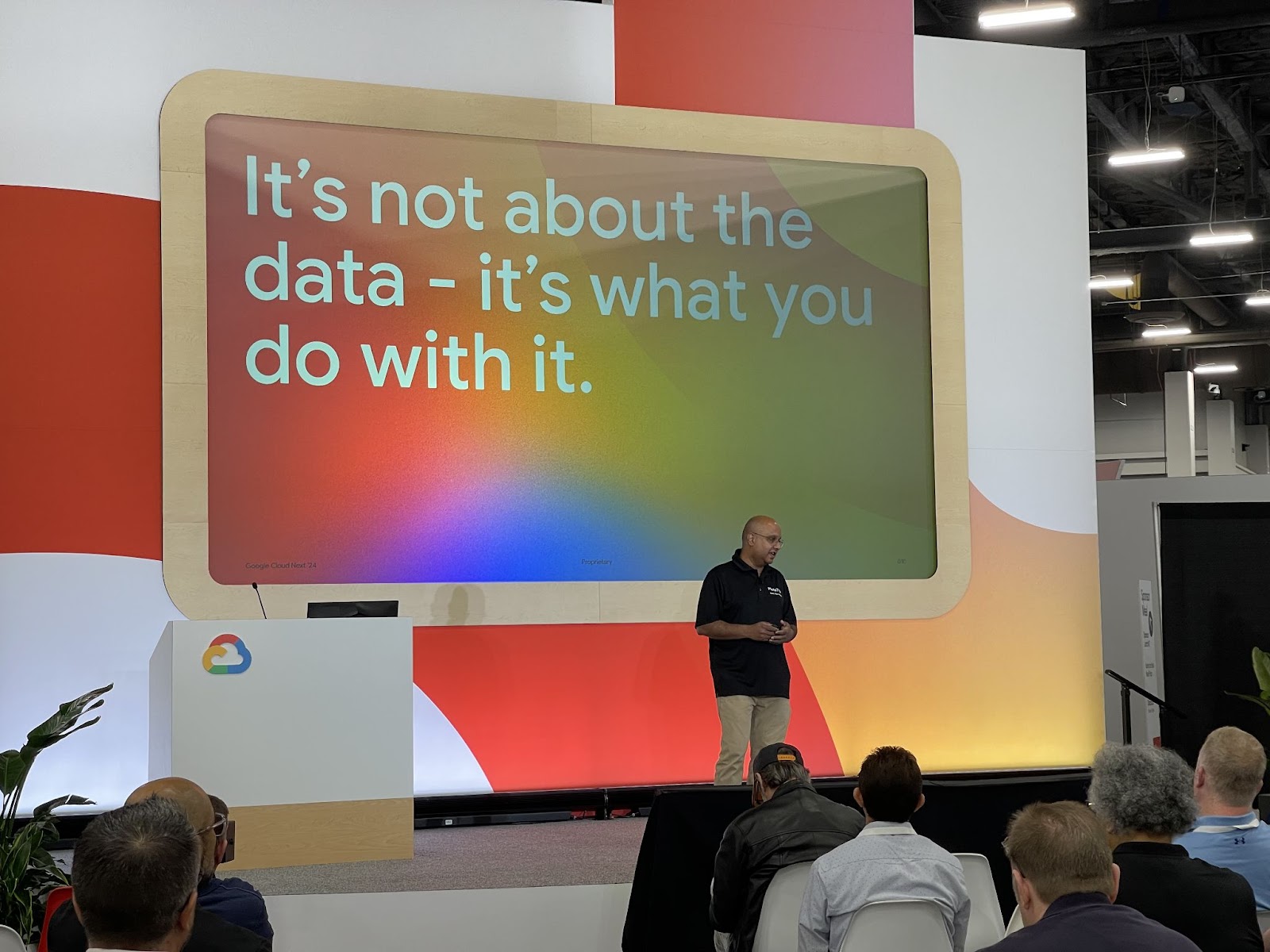
Transform Your Supply Chain Planning and Marketing Strategies with Google Cloud and SAP Integration

Transform Your Supply Chain Planning and Marketing Strategies with Google Cloud and SAP Integration
April 22, 2024 | Manju Devadas
Blog / Decision Intelligence Platforms are Foundational for Generative AI: Key Insights from Google Cloud Next ’24
Image by rawpixel.com on Freepik.
Demand planners are spending too much time on baseline forecasts, inventory excess is still an unsolved mystery, AI experiments are expensive, and there is a fear of failure. There is a push from the board to make insight-driven actions, but data silos are making it difficult.
How does the chief supply chain officer solve these challenges? Google Cloud Next ’24 provided some concrete answers.
At Pluto7, we take our customers on the journey from data silos to decision intelligence in 4 weeks or less. Decision intelligence is about activating ERP data and enabling predictive capabilities.
This means a demand planner can begin the day with a baseline forecast already prepared. When there’s a spike in demand in New York, the inventory manager working in a nearby warehouse in New Jersey can quickly respond, or the production planner is automatically guided to which batch might have defects.
For the leaders tasked with the goal of transforming their supply chains and becoming more efficient in data, consider these five crucial innovations:
Why should demand planners spend hours creating initial baseline forecasts when AI can do it in seconds?
With Pluto7’s Planning in a Box platform, AI does most of the heavy lifting. For eg, it compiles data from your CRM, ERP, and external sources, ensuring the planner has more time to work on interpreting these forecasts like determining how external factors such as seasonal changes or economic shifts will impact supply and demand—rather than spend copious, soul-crushing hours arriving at the baseline data.
Managing inventory is tricky, and not having access to real-time data makes it even more difficult. In the current setup, inventory optimization is reactive from the get-go. You react when excess inventory leads to increased storage costs and potential write-offs. But what if you could turn it around? That’s what we are doing with Planning in a Box.
Planning in a Box uses predictive analytics to identify potential overstock early, optimize reorder quantities based on current demand trends, and suggest alternative sales strategies before excess becomes an issue.
For an inventory planner, this means all the attention now goes towards actioning the suggestions received through the platform, such as adjusting future orders or launching targeted promotions.
Google Cloud’s innovative tools, particularly Vertex AI, play a significant role in achieving this. Planning in a Box uses Vertex AI to continuously analyze sales data, detect subtle market shifts, and provide actionable insights that prevent inventory mismanagement.
Imagine your production line equipped with the capability to analyze real-time images of products as they move along the line and automatically classify defects (such as cracks, misalignments, or incorrect dimensions).
This is exactly what we are doing with Konnect Manufacturing. Gemini’s capabilities in image recognition and predictive analytics are integrated into this platform, making it possible to identify defects rapidly and take follow-up actions on the spot.
The applications of this technology are extensive. Using insights from detected defects, predictive algorithms can be applied to answer questions like ‘What is the likelihood of a defect occurring in the next batch?’ Take a quick look at how this works.
SAP ecosystems are inherently complex. Activating SAP data brings in the challenge of migrating thousands of unique SAP tables, each with its own dependencies and configurations. And so, for many companies, using AI remains a wishful thinking.
But not anymore. At Pluto7, we are using Google Cloud’s reference architectures (Cortex Framwork) and tools (such as BigQuery and Gemini in coding) to transform SAP data in as quick as 24 hours. To put things in perspective, we are now able to ingest SAP data, activate it with external datasets, and provide answers to critical questions such as ‘Which equipment will require maintenance within the next month?‘ and ‘‘Which distribution centers will run out of stock in the next month?‘ all in less than 24 hours.
If you are struggling with SAP data, check this page to see how we enable a zero-to-one journey for SAP users.
Google made it clear that to harness the power of AI and Gen AI, decision intelligence platforms that prioritize a robust data foundation will be key to success.
Decision Intelligence Platforms are different from pre-packaged SaaS products. They are composable platforms that work on top of your existing ERP, connecting data across sales, marketing, finance, and supply chain to provide AI-enabled decision support throughout your business.
All the technicalities aside, what this means is that these platforms enable a holistic view of your business operations, allowing for smarter, data-driven decisions that are synchronized across all departments.

So far, we’ve discussed possibilities; now comes the fun part. How do we put all of this into action? How do you ensure your AI use case is robust? How do you guarantee success? How do you see value in the shortest possible window?
Here’s how you do it: Start with one use case, like demand forecasting.
Think of this initial step as planting a sapling. As it grows, it begins to pull in more data. This broader net of data it gathers nourishes the sapling into a strong tree. Over time, this AI tree evolves and reveals the interconnectedness within your business. It identifies patterns, suggests optimizations for inventory and assets, and enhances the planner’s ability to understand each moving part and support individual customer needs.
With decision intelligence platforms like Planning in a Box, you move from isolated chunks of data to seeing the whole picture, helping you make decisions like a superhuman.
To tap into the value of sophisticated LLMs like Gemini, you need a platform that not only consolidates your data but also activates it and continuously learns from it, creating a virtuous cycle of improvement. With Planning in a Box, we’ve been enabling this journey from data silos to AI-driven insights in just 4 weeks, solving complex supply chain and manufacturing challenges for companies such as Lixil, CDD, and hundreds of retail & CPG companies.
Join us for a workshop to discover how Pluto7 can help you activate your enterprise data and harness the full potential of AI in your operations.
ABOUT THE AUTHOR